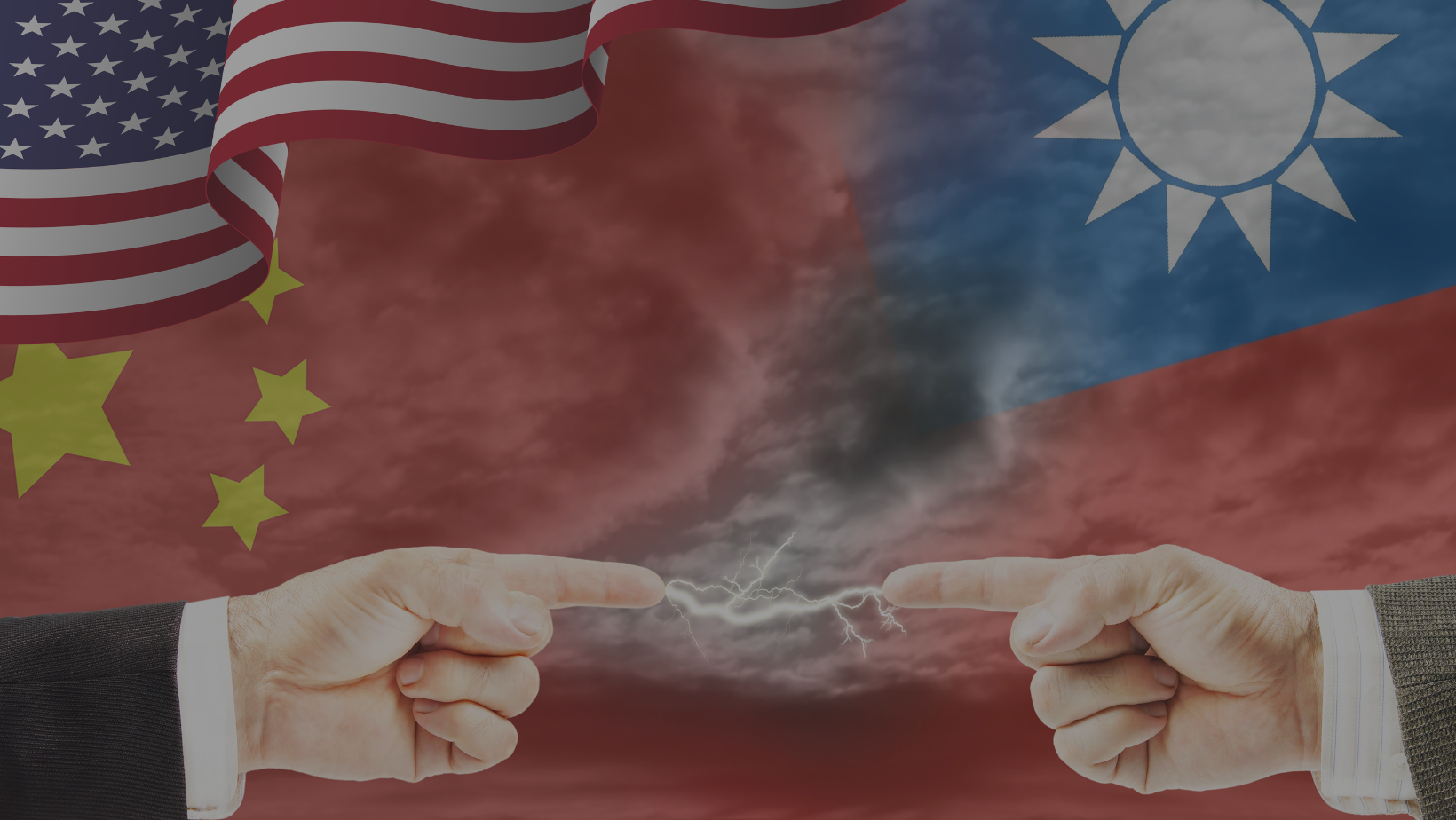When discussing Taiwan’s “international space”, we conventionally refer to a contest over the juridical sovereignty of Taiwan (the Republic of China, ROC). Whether departing from the perspective of international law or theories of International Relations, the cross-Taiwan Strait sovereignty conflict in global politics involves two issues: Taiwan’s capacity to gain formal diplomatic recognition or, at least, to maintain relations with the existing diplomatic partners; and Taipei’s capacity to re-enter—or gain informal association with—intergovernmental organizations (IGOs), such as the World Health Organization.
For the authorities of the People’s Republic of China (PRC), Taiwan’s exclusion from the web of diplomatic partnerships and IGOs supports their claim that Taiwan—as the PRC’s rebel province—lacks internationally recognized statehood. For Taiwan, diplomatic isolation carries significant opportunity costs: Taipei cannot engage in regular diplomatic practices and must identify alternative—often clandestine and costly—methods to communicate with foreign governments. It cannot conclude formal agreements with foreign governments in the economic arena ( such as free trade agreements) or security (mutual defense treaties). It also cannot participate in international norm-making, including on such issues as climate change or developmental assistance, but is expected to abide by norms established without its involvement or consent. Perhaps most importantly, the exclusion from the United Nations (UN) deprives Taiwan of UN Charter protection. In other words, UN member states (including China) are not obliged to refrain from threatening or using force against Taiwan’s territorial integrity and political independence.
While the China-Taiwan sovereignty conflict in the global arena is well documented and attracts international media scrutiny, this conflict is not limited exclusively to the “high politics” of inter-state relations. Indeed, after the United States’ derecognition of Taiwan in 1979, it has become a fixture of China and Taiwan’s relations with American states and cities, attracting little or no attention from analysts of cross-Strait relations and the broader International Relations scholarly community. Starting in 1978 and resorting to ideational and economic instruments, both Beijing and Taipei have engaged in fierce competition over the extent to which American state and city governments accepted the “one China” principle as guiding their engagement with both antagonists. To date, their specific efforts center on five distinct areas:
- Sister-state and sister-city agreements.
- American states’ economic offices in Taiwan.
- American gubernatorial visits to Taiwan.
- State legislative resolutions regarding Taiwan.
- State and city officials’ meetings with visiting Taiwanese dignitaries, especially transiting ROC presidents.
Sisterhood agreements
Given the absence of US-PRC diplomatic relations between 1949 and 1979, Taiwanese cities unsurprisingly established a web of sisterhood partnerships with numerous American cities and counties without Beijing’s obstruction. However, only after Hubei inked a sister-state agreement with Ohio in late 1979 did the ROC authorities enter the competition for sisterhood partnerships with American states. Using economic incentives, such as investment and export orders, and presenting itself as “Free China”, the ROC successfully established sisterhood ties with more American states than the PRC. By early 2022, there were only 50 pairings between PRC provinces and American states (with some states partnering with a few Chinese provinces), while 42 American states established ties with Taiwan.
Taiwanese officials did their best to include references to the ROC in the texts establishing sisterhood partnerships to affirm Taiwan’s sovereign statehood. At the same time, US-China sisterhood agreements customarily included references to the so-called “Three Communiques” that noted the US administrations’ acknowledgement of “one China” policy, implicitly affirming Chinese sovereignty claims over Taiwan. No concrete evidence exists to prove that PRC officials successfully prevented American states and cities’ sisterhood accords with their Taiwanese counterparts. Yet, until today, at least two prominent American municipalities—New York City and Washington, DC—have not concluded such agreements with Taipei despite the latter’s consistent efforts. In contrast, there is evidence suggesting that Beijing objected to the “offensive” references to the ROC in sisterhood agreements, persuading some American governors to remove them from the final accords. There is also circumstantial evidence suggesting that by the early 2000s Beijing began demanding the inclusion of an explicit “one China” clause in sisterhood accords, particularly with American cities and counties.
States’ economic offices in Taiwan
In the 1980s, American states rushed to establish economic offices in China because of its status as a promising export market. Illinois became the first to do so, with Shenyang, the capital of Liaoning Province. Taipei joined the competition, considering such offices symbolizing US states’ commitment to strong relations with Taiwan.
By the early 2000s, when US exports to China exceeded exports to Taiwan, some American states began closing their bureaus in Taipei. Between 2000 and 2020, the number of state offices in Taiwan declined from 22 to 10, while the number of state offices in China grew from 16 (2002) to 32 (2019). Governors often cited budgetary reasons when justifying the office closure. However, in at least one case, the conflict between China and Taiwan explicitly factored into the state government’s decision to close its trade bureau in Taipei. In 2012, for instance, Montana closed its office in Taipei, reportedly to attract US$150 million in Chinese investment in the hog-processing facility. While the office shut down, Chinese investments never arrived.
The trend reversed only in the aftermath of the US-China trade war that began in 2018 after the election of US President Donald Trump the previous year. Wyoming became the first US state to open an office in Taipei in late 2018. In 2021, Montana reopened its office in Taipei, followed by Minnesota, Pennsylvania and West Virginia (2022), as well as Arizona and Virginia (2023).
Gubernatorial visits to Taiwan
US gubernatorial visits to Taiwan began in the 1950s and continued thereafter. Some governors, including Bill Clinton of Arkansas, visited Taiwan numerous times. The PRC authorities did not look at those visits kindly and communicated their opposition to those governors who cared to listen. By the early 2000s, Chinese protests became more vocal and persistent. PRC officials asserted that American governors should not include China and Taiwan on the same trips or, if they did, that they should visit China before visiting Taiwan. Their efforts sometimes resulted in public (and humiliating) visit cancellations. For example, in 2010, Missouri’s Democratic governor, Jay Nixon, canceled his Taiwan trip after the PRC’s Consul General expressed a “strong concern” that his visit would affect the Midwest China Hub Commission’s chances of securing a deal to turn Lambert-St Louis International Airport into the Chinese freight hub in the United States. Some governors, such as Terry Branstad of Iowa after 2011, avoided visiting Taiwan altogether. Chinese threats of economic sanctions and American governors’ intense efforts to secure access to the Chinese market explain the declining frequency of gubernatorial visits to Taiwan from no fewer than ten in 2004 to between one and three a year, thereafter.
Chinese threats of economic sanctions against those states whose governors visited Taiwan became less effective in the aftermath of the US-China trade war. Indiana’s Republican governor, Eric J. Holcomb, proceeded with his visit to Taiwan in 2022 despite Beijing’s public call on the “relevant party in the US to abide by the one-China principle and the three China-US joint communiqués and stop all forms of official interactions with the Taiwan region”.Other governors who similarly ignored Chinese threats when visiting Taiwan after 2018 included those from Arizona, Arkansas, Idaho, New Mexico and Virginia. Crucially, no American governor visited China between early 2020 and October 2023.
State legislatures’ Taiwan-related resolutions
US state legislatures began passing Taiwan-related resolutions in the 1970s, at first to support US diplomatic relations with the ROC and later to praise Taiwan’s democratization and diplomatic initiatives, including efforts to rejoin international organizations and conclude various agreements with the US government. Such resolutions (or memoranda) directly or indirectly affirmed Taiwan’s sovereign statehood and presented Taiwan as a US ally, sharing American democratic values. For this reason,PRC authorities—primarily via Chinese diplomats stationed across the US—objected to state legislative expressions of support for Taiwan. For example, in 2020, the PRC’s Consul General in New York wrote to at least one speaker of a state legislature demanding that it should not send any congratulatory message to Taiwan’s re-elected president, Tsai Ing-wen, to refrain from introducing bills and proclamations for the election, from sending officials and representatives to attend the inauguration ceremony, and from inviting Taiwanese officials to the US.
However, in many cases, Beijing’s formal protests or obstruction were likely unnecessary because China-friendly state legislators (the so-called “co-opted elites”) saw the Taiwan issue as a red line they could not cross without angering Beijing. For example, between 2010 and late 2022, the Iowa state Legislature considered no fewer than 30 pro-Taiwan resolutions, passing none. At least in one case, legislators in one American state refrained from passing a symbolic resolution on Taiwan to support the Chinese multi-billion investment project (which, in the end, did not materialize).
Circumstantial evidence suggests that Beijing tried to convince state legislatures to pass resolutions affirming the “one China” principle. Perhaps its greatest achievement was in Oregon, where House Concurrent Resolution 34 (2019), which failed to pass, invoked the “one China” principle when pledging to respect the “Three Communiques” as playing a “crucial role in the ongoing dialogue between the [American and Chinese] nations”.
However, Oregon’s resolution is an outlier. It is the absence of American state lawmakers’ support for the “one China” principle that defines their stance on the China-Taiwan sovereignty conflict. During the COVID-19 pandemic, state legislators’ support for Taiwan intensified. Between 2020 and 2022, legislators in about half of US states contemplated pro-Taiwan resolutions. In 2021, a record was set when legislative houses in at least 37 states considered resolutions supportive of Taiwan, with legislatures in 26 states passing pro-Taiwan resolutions or memorials. No corresponding surge of support for China (whether on Taiwan or COVID-related issues) occurred.
States’ hosting of transiting ROC presidents
Since the US federal administration resolved to allow ROC presidents to transit via American territory en route to Latin America in the mid-1990s, US states and cities stepped in to provide Taiwanese dignitaries with the head-of-state treatment the federal government could not due to its “one China” policy. Chinese officials strongly objected to such transits and governors/mayors’ meetings with Taiwanese—to use the PRC terminology—“presidents”. This forced some subnational officials, such as New York Mayor Rudi Giuliani, to sneak into hotel meetings with Taiwanese leaders. Others were “too busy” for such meetings. Still, others may have rejected the idea of Taiwanese leaders visiting their states. Those who met Taiwanese presidents faced Chinese threats of economic sanctions. For example, in 2019, the PRC’s consul general in Houston, Li Qiangmin, wrote to Texas’ Republican governor,. Greg Abbott, warning him that support for “Taiwanese separatists” could undermine Texas-China economic relations and requesting him “neither [to] contact, meet nor support Tsai [Ing-wen] during her stay in Houston”. Governor Abbott met President Tsai, but no Chinese economic sanctions followed. Indeed, after 2019, Texas became one of the critical destinations for China’s outbound investment in the United States.
American states and Chinese and Taiwanese objectives
The Chinese and Taiwanese authorities rarely discuss their objectives regarding relations with American states and cities regarding the cross-Strait sovereignty conflict. In numerous cases, the Taiwan issue is not a determining factor behind the Chinese efforts to strengthen economic and cultural subnational ties with the US. For example, during the US-China trade war, Beijing resorted to building a united front with selected American states and cities to pressure the Trump administration to change its China policy.
Still, the Taiwan-China sovereignty conflict remains a crucial element of the US subnational engagement with China and Taiwan, with both antagonists seeking American states and cities’ support for their respective sovereignty claims. One of their most evident and crucial objectives is elite co-optation, namely to induce American subnational elites to accept or reject the “one China” principle so that once such officials move to federal agencies they could obstruct or facilitate United States’ relations with Taiwan. A few former governors became US presidents, including Jimmy Carter, Ronald Reagan, Bill Clinton, and George W. Bush. Some governors and mayors also become US Senators, while numerous state legislators enter the US House of Representatives. In 2022, 22 US presidents and 22 vice presidents served in state legislatures before moving to the White House. From 2005 to 2019, the number of former state legislators entering Congress ranged between 48 and 51 percent. Unfortunately for Taipei, pro-Taiwan governors (such as Ronald Reagan and Bill Clinton) do not necessarily pursue an unequivocally pro-Taiwan agenda after winning presidential elections.
Sabotage of Taiwan’s engagement with American states and cities is part of Beijing’s strategy to tighten Taiwan’s isolation in the international arena. If effective, it could potentially undermine Washington’s commitment to Taiwan’s security. For this reason,ROC authorities seek to expand subnational relations with the United States.
American states and cities’ interaction with Taiwan, praise for Taiwanese democratic achievements, and acknowledgement of Taiwan’s independent statehood testify to the immense support Taiwan enjoys within the United States. The presence of subnational support for Taiwan delineates the boundaries for the Washington establishment’s appropriate stance on the China-Taiwan sovereignty dispute. Indeed, in the late 1970s and early 1980s, some governors became exceedingly vocal in opposing the Carter administration’s decision to de-recognize the ROC. When, in the early 2000s, American state governments rushed to strengthen economic relations with China and began closing their Taiwan offices and reducing the frequency of visits to Taiwan, the George W. Bush Administration found it easier to side with Beijing on the Taiwan issue.
Finally, Chinese efforts to enforce the “one China” principle in American states and cities’ international relations suggest a wide-scale campaign to police the international community’s attitudes towards the Taiwan question. Neither American states nor cities have the constitutional authority to decide on such issues of high politics as the ROC’s juridical sovereignty. Thus, any subnational expression of support for Taiwan is merely symbolic, carrying no legal consequences. Yet, PRC authorities remain acutely aware of Taiwan’s de facto independence and of the “one China” principle as a social construction that is real to the extent it is universally accepted as such by the international community, including subnational states. Hence, the intense China-Taiwan struggle for the hearts and minds of American subnational elites and the broader public that many students of international law and International Relations find challenging to explain.
Broader implications
Efforts to shape American cities and states’ relations with Taiwan are only a small part of Beijing’s broader campaign to limit the US support for Tibetans, Uighurs, human rights activities, and Falun Gong practitioners, as well as moderate the US resolve to scrutinize Chinese investment on security grounds and ban exports of sensitive technologies. More recently, Beijing also sought to mobilize American state and city governments against the trade war and the Trump administration’s criticism of China as responsible for the COVID-19 pandemic.
However, the China-Taiwan sovereignty conflict consistently remains one of the key issues defining the parameters of American states and cities’ relations with China and Taiwan. The Chinese and Taiwanese subnational engagement with the United States carries at least two significant implications. At the practical level, it facilitates American subnational elites’ nuanced understanding of cross-Taiwan Strait relations. Rather than being naïve “victims” of Chinese or Taiwanese efforts to shape their perspectives on Taiwan, they remain acutely aware of the ideational, geostrategic, and economic consequences of taking a stance—however implicitly—on Taiwan’s sovereignty. Therefore, the decision by Iowa’s governor, not to travel to Taiwan after 2011 does not indicate his naiveté of East Asian geopolitics, but rather his purposeful deployment of the “Taiwan card” to prove his loyalty to the CCP regime and, in return, elicit Chinese economic rewards for Iowan businesses. The Trump administration recognized his China expertise in 2016 when appointing Branstad as the US ambassador to Beijing.
At the conceptual level, the US subnational engagement with China and Taiwan challenges the fundamental assumption within studies of subnational diplomacy (or “paradiplomacy”). Students of paradiplomacy have long argued that subnational states, whether in the US or elsewhere, develop internationalization strategies chiefly in response to economic globalization that forces them to compete for scarce economic resources in the global marketplace. Focusing on subnational states’ competition for export markets and foreign capital, students of paradiplomacy argue that foreign economic activities (“low politics”) constitute the core of subnational diplomacy. They caution against subnational states’ involvement in high politics, such as issues pertaining to inter-state relations, because these should be left to central governments. In their view, no country—whether federal or unitary—should feature a variety of incompatible foreign policies pursued by different subnational governments or challenge the diplomatic priorities chosen by central governments. US scholars devote significant attention to conflicts between federal and state/local governments regarding foreign policy issues, explaining why these conflicts are detrimental to US national interests.
However, Chinese and Taiwanese efforts to engage American states and cities in their sovereignty conflict demonstrate that foreign leaders consider US subnational states relevant to high politics. As a result, American states and cities play an essential role in the “one China” discourse in US and global politics. Through formal agreements, offices, visits, and resolutions, they construct and produce Taiwanese sovereignty and often deny Beijing the authority to claim jurisdiction over Taiwan’s territory and its people. These constructions and productions of Taiwanese sovereignty have practical effects by limiting the federal government’s range of options on the Taiwan issue and proving that the scholarly preoccupation with low politics of subnational politics misses half of the picture, perhaps the most exciting half.







